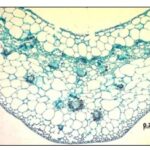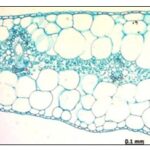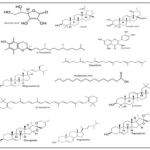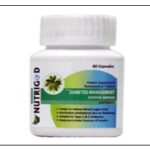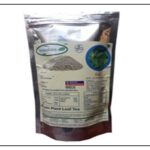PHARMACOGNOSTIC STUDY AND PHARMACOLOGICAL POTENTIALS OF COSTUS IGNEUS PLANT – REVIEW
HTML Full TextPHARMACOGNOSTIC STUDY AND PHARMACOLOGICAL POTENTIALS OF COSTUS IGNEUS PLANT – REVIEW
Lavanya Athilli *, A. Fatimah Siddiqui, Fahad Hussain and Eenaz Ajaz Hussain Parvez
Department of Pharmacognosy, Sultan-ul-Uloom College of Pharmacy, Banjara Hills, Hyderabad, Telangana, India.
ABSTRACT: The Plant Costus igneus is a member of the Costaceae family. The family Costaceae has about 200 species, of which genus Costus being largest comprises about 104 species. Costus igneus is indigenous to South-East Asia. Costus igneus is often called as ‘Insulin plant’ as it helps to elevate the insulin levels in the body and hence, works as a hypoglycemic agent. The phytochemical analysis of the leaves of Costus igneus revealed that it has higher compositions of iron, protein, and antioxidant substances such as ascorbic acid, α-tocopherol, β-carotene, terpenoids, steroids, and flavonoids. The traditional utilization of this plant included promoting healthy life and age, treating rashes, asthma, and bronchitis, reducing fever and eliminating intestinal worms. This article aims to review the pharmacognostic study of Costus igneus and explore its pharmacological activities such as antidiabetic activity, antiproliferative activity, antimicrobial activity, antiurolithiatic activity, its effects on learning and memory, antioxidant activity, hepatoprotective activity, etc.
Keywords: Costus igneus, Costaceae, Insulin plant, hypoglycemic agent
INTRODUCTION: The advent of contemporary living resulted in a multitude of diseases such as diabetes mellitus, malignancy, cardiovascular diseases, etc. It is evident that herbal plants are treating these ailments efficiently, which leads the majority of people to depend on them. The world market for herbal products has a notable rise and estimated US$ 60 billion approaches. The admix of modern methods and ancient practices, keeping in view of scientific procedures helps ingeneration of newer medications from natural sources to tackle lifestyle diseases 1.
Nature is a storehouse of remedies to treat all ailments of mankind. The extensive knowledge of medicinal agents results from man's curiosity towards nature. Hence, we hold much effective alternatives while ensuring the health care needs 2. Plant parts contain many important chemical constituents which possess beneficial Pharmacological activities. There is rapid growth in the need for medicinally important natural products both nationally and internationally.
The recent demands for plant-based products in medicine and industry led to the expansive investigations of the plants for potential agent shaving therapeutic activities 3. The Pharma-cognostic study marks the identity of the plant, develops the standardization. Parameters to exclude adulterants and thus help in authentication of plants. It provides reproducible quality of herbal products that render safe and efficacious natural products 4. Costus igneus Nakhas synonyms such as Costuspictus D. Don, Costus congenitus Rowle or Costus mexicanus Liebmex Petersen. It is commonly referred to as fiery Costus or step ladder or spiral flag or insulin plant 5.
The plant C. igneus belongs to the Costaceae family. The Costaceae was first hiked to the rank of the family by Nakaion based on spiral phyllotaxy having alternate leaves arranged spirally and rhizomes devoid of aromatics sential oils. Earlier Engler and Prantl regarded Costoideal as a subfamily under Zingiberaceae. However, with investigations of anatomical and morphological features such as aerial shoots with rigid and differential branches, spiral leaves with divergences. The family Costaceae has 4 genera and about 200 species, with genus Costus being largest possessing 150 species 6. More than100 species of the Costus are available, which vary in colour of flowers. Some flowers and bracts appear like compact cones, while remaining sculpts like Pineappleors of crepe emerge out of green cones. Few leaves appear pubescent on abaxial surface, while the remaining are lustrous and purplish. In India, about 7 species belonging to genus Costus Linn observed are C. barbatus, C. chartaceus, C. Cuspidatus, C. Giganteus, C. Igneus, C. Spectabilis, C. pictus 7.
This review aims to conduct a pharmacognostic study on the Costus igneus, a medicinally promising plant, and explore its pharmacological activities. Costus igneus is usually referred to as an insulin plant by Indians sit helps to elevate the Insulin in the body. The insulin plant is indigenous to Southeast Asia. In India, it has found its use as a nornamental plant that adorns the beauty of the environment 8. The leaves of C. Igneus were used in the treatment of diabetes by the tribes of Kolli hills, belonging to the Namakkal district of Tamil Nadu 9. As per the Mexican traditions, The aerial part of C. pictus D. donis being used to treat renal disorders 10.
TABLE 1: VERNACULAR NAMES 11
| Language | Names |
| English | Spiral Ginger, Spotted Spiral Ginger, Painted Spiral Ginger |
| Telugu | Peddavesiga, Yeangesha |
| Urdu | Bijasar, Dam alakhwain |
| Bengali | Piasal |
| Hindi | Banda, Bija-sal, Peisar, JARUL, Keukand |
| Kannada | Kempuhonne |
| Malayalam | Honne, Karintakara, Vengai, Venna-maram |
| Marathi | Honi, Pushkarmula |
| Odisha | Vengis |
| Sanskrit | Asana, Bandhukapushpa |
| Tamil | Neyccarikamaram, Venkai-c-ciray, Kostam |
| Gujarati | Pakarmul |
TABLE 2: TAXONOMY 12
| Botanical name | Costus igneus N. E. Br |
| Domain | Eukaryota |
| Kingdom | Plantae |
| Subkingdom | Viridaeplantae |
| Phylum | Tracheophyta |
| Subphylum | Euphyllophytina |
| Infraphylum | Radiatopses |
| Class | Liliopsida |
| Subclass | Commelinidae |
| Superorder | Zingiberanae |
| Order | Zingiberales |
| Family | Costaceae |
| Subfamily | Asteroideae |
| Tribe | Coreopsideae |
| Genus | Costus |
| Specificepithet | Igneus |
Plant Description: It is a perennial and upright growing plant that spreads about of extends sets down onto the ground. The leaves are simple, alternate, oblong, and evergreen, which acquires about 4-8 inches of length and possesses parallel venation. This tropical evergreen plant has smooth, large, and spirally arranged dark green leaves with light purple undersides that appear attractive and arching clumps from underground rootstocks. It produces 1.5 inches beautiful, orange flowers in the warm months and appears as cone-like heads arising from the tip of branches 13. The plant is a rhizomatous shrub and penetrates through the tuberous rhizome underground.
The rhizome is soft, cylindrical, and fleshy with a smooth pale brown surface ranging from about 30-40 C min. It is pleasantly aromatic 14. It is indigenous to eastern Brazil (states of Bahia and Espiritu Santo) and South America. It is also observed in Tropical Africa, North America, Asia, and Australia. It was introduced into India from America as an herbal cure for diabetes. In India, Costus is mainly found in Kashmir and South India regions 15.
The spiral flag can grow either in full sun or partial shade. It requires fertile soil and sufficient moisture and is often planted near an adequate water source. The propagation mode is by division of the clumps, cuttings or by separating the offsets or plantlets that form below the flower heads. Mites and nematodes can often menace, especially on light sandy soil. Currently, there are no diseases majorly affecting plant growth 13.
FIG. 1: INSULIN PLANT
FIG. 2: STEM OF COSTUS IGNEUS PLANT
FIG. 3: LEAF OF COSTUS IGNEUS PLANT
FIG. 4: RHIZOMES OF COSTUS IGNEUS PLANT
Microscopy: The transverse section (T.S) of C. igneus leaf showed upper and lower epidermis. It contains wide mesophyll tissue having a huge proportion of large parenchymal cells. They are seenem bedding the continuous strands of fibrovascular bundles. The upper epidermis cells are comparatively smaller than the lower epidermal cells. The lower epidermis is embedded with stomata, often beaded with the epidermal cells. The vascular bundles are found to be embedded in then broken strands of chlorenchyma, with their cells being either elongated or spherical.
The vascular bundles contained large vessels at the center, which is surrounded by phloem tissue. The bundles are found to be fibrous with parenchyma present adjacent to them and are loaded with rosette-shaped calcium oxalate crystals. Fibers are thin-walled, making two arc-like patches that protect the vascular tissue on either side. The extravascular bundles present in the mid-rib possess ‘U’ shaped fibrous heath on the lower side. T. S through the lamina shows same anatomical feature slacking extra-vascular bundles.
The plant Costus igneus exhibits a set of diagnostic characteristics like epidermis having anomocytic stomata and calcium oxalate crystals which will help for identification 16.
FIG. 5: DETAILED TS OF LEAF PASSING THROUGH LAMINA
FIG. 6: DETAILED OF LEAF PASSING THROUGH MIDRIB
FIG. 7: DETAILED MICROSCOPIC FEATURES OF LEAF OF COSTUS IGNEUS PLANT
Phytochemical Constituents: Various phytochemicals such as flavonoids, terpenoids, and alkaloids are observed in Costus igneus. These bio-active components are present in plants like leaves, stems, rhizomes, etc.
Leaves: Carbohydrates, triterpenoids, proteins, alkaloids, tannins, saponins, and flavonoids, etc., are found 17. In addition, carbohydrates such as rose side, steroids, fatty acids such as oleic acid, tetradecanoic acid, hexadecanoic acid 9, 12- octadecanoic acid, ethyl oleate, squalene are also present in leaves.
Stem: Terpenoid compound (lupeol) and steroid compound (stigma sterol) are available in stem 18.
Rhizome: Quercetin, diosgenin, asteroidal sapogenin etc are found in rhizome 19, 20.
Root: Terpenoid, alkaloids, Tannins, etc., are available in root portion 14. The phytochemical screening of C. igneus leaves displayed high concentrations of iron, protein, various antioxidants (ascorbic acid, α-tocopherol, β-carotene), steroids, terpenoids, and flavonoids 21, 22.
TABLE 3: MAJOR CONSTITUENTS OF ESSENTIAL OIL 26
| Stem oil (%) | Lea foil (%) | Rhizome oil (%) |
| Hexadecanoic acid (28.3) | Hexadecanoic acid (24.51) | Hexadecanoic acid (25.26) |
| 9,12‑octadecadienoic acid (18.33) | 2‑pentanol (22.48) | 9,12‑octadecadienoic acid (7.74) |
| Dodecanoic acid (5.62) | Dodecanoic acid (3.96) | Dodecanoic acid (16.56) |
| Linalylpropanoate (6.03) | ß‑ionone (8.69) | Tetradecanoic acid (10.20) |
| Tetradecanoic acid (4.82) | Farnesyl Acetone (7.04) | Linalool (8.48) |
| A‑eudesmol (3.55) | A‑ionone (8.01) | α‑terpineol (4.44) |
| γ‑eudesmol (3.21) | ||
| 4‑ethoxyphenol (3.06) |
FIG. 8: PHYTOCONSTITUENTS OF COSTUS IGNEUS PLANT
A study conducted on methanolic extract of Costus igneus revealed to possess the highest number of phytochemicals such as carbohydrates, proteins, proteins, alkaloids, triterpenoids, tannins, saponins, etc flavonoids 23. The preliminary phytochemical evaluation of C. igneus plant reported that the leaves contain 21.2% fibers. The subsequent extractions showed 5.2% of the extractives in petroleum ether, 1.06% in cyclohexane, 1.33% in acetone, and 2.95% in ethanol portions. The evaluation of these successive extracts revealed the presence of steroids in all the extracts. Additionally, alkaloids were also found in the ethanol extract. In the ether fraction, the major component was bis (2’-ethylhexyl) - 1, 2-benzene dicarboxylate (59.04%) in addition to α-tocopherol and asteroid namely, ergostanol 24. The analysis for trace elements showed that the leaves and rhizomes of C. pictus contains considerate amounts of the element such as potassium, calcium, chromium, manganese, copperandzinc 25. The steam distillation of stem, leaves, and rhizomes of C. pictus D. Don produced yellow and translucent essential oils. The major constituents present in the essential oil are enlisted in the below table 26.
Traditional uses:
Leaves: According to Ayurveda, patients with diabetes were instructed to chew the Insulin plant leaves for one month. Here the patients were prescribed consumption of 4 leaves in a day (2 in the morning and 2 in the evening) for a week. They were cautioned to chew the leaf well before swallowing it. After that, it was reduced to 2 leaves in a day. They were advised to consume 1 leaf in the morning and 1 in the evening. It was continued up to 30 days. It was evident in restoring the blood sugar levels back to the controlled limits. The traditional uses of these leaves included the promotion of healthy life and age, treatment of rashes, asthma and bronchitis, reduction of fever, and in removal of intestinal worms 28.
Rhizome: The rhizome of the insulin plant has found its uses as an astringent, acrid, bitter, cooling, aphrodisiac, anthelmintic, purgative, febrifuge, depurative, and expectorant. It is also useful in burning sensation, constipation, leprosy, worm infection, skin diseases, fever, asthma, bronchitis, inflammations, and anemia 21.
Pharmacological Activities: The C. igneus plant has been found to possess several activities, while amongst them some are yet to be confirmed. The parts of this plant that displayed various beneficial activities included leaves, stem, roots, rhizome, and whole plant, respectively. The Leaves have high hypoglycemic potential. The stem has shown anti-urolithiatic activity. Both the stem and the root has reported considerable antioxidant activity.
Anti-Diabetic Effects: The leaves of Costus igneus plant are the most vital part of the plant, which produces prominent antidiabetic activity. It lowers both fasting and post pyramidal blood sugar levels in dexamethasone-administered hyperglycemic rats. The reduction in the fasting blood glucose levels and the postprandial blood-glucose levels by the Costus igneus leaves was found equivalent to that observed with Glibenclamide 500µg/kg against 250 mg/kg/day and 500 mg/kg/day of the powdered leaves of the Costus igneus. However, the actual mechanism of action for this antidiabetic activity is not yet discovered 28. A study was conducted by administering100 and 200 mg/kg body weight of ethanol rhizome extract orally for 30 days to STZ induced diabetes in Albino Wistar rats. It revealed that the extracts significantly reduced blood glucose levels in diabetic rats and also reversed levels of carbohydrate metabolic, hepatoprotective, and antioxidant enzymes 36. Various bio-components present from Costus igneus plant show anti-diabetic activities. Some of them are relisted in the table below:
TABLE 4: MAJOR ISOLATED COMPOUNDS FROM COSTUS IGNEUS PLANT INDICATING ANTIDIABETIC EFFECTS 29
| Name of the compound | Activities |
| Triterpenoid (Corsolicacid) | Glucose uptake activity |
| Steroid (Diosgenin) | Hypoglycemic property |
| Steroid (beta-sitosterol) | Increases plasma insulin level and a lsoincreases glucose uptake activity |
| Flavonoid (Quercetin) | Increases insulin-mediated glucose up taking and activity of antioxidant
enzymes |
| Phenol (catechin) | Inhibitαglucosidase activity and antioxidant activity |
| Insulin-like protein | Hypoglycemic activity |
| Fatty acid (Oleic acid) | Hypoglycemic activity |
Anti-Proliferative Potential: Prof. S. Dhanasekaran et al., (2014) investigated the anti-proliferative or anticancer activity of methanolic extract of the Costus igneus powdered leaves (MECiL) on an in-vitro Michigan Cancer Foundation-7(MCF7) Breast cancer cellline.
This extract reported potential cell toxicity against the MCF-7 cell line only. With 2000 µg/ml dose, the extract showed potential anticancer activity. It showed 97.46±0.74 percent of cytotoxicity at the maximum dose. Thus, the MECiL was found to have dose-dependent cytotoxic activity on MCF-7 cell lines. Additionally, it was evaluated for the cell viability and cytotoxicity of the extract (15-2000µg/ml) on the L6 cell line (Rat skeletal muscle cell line) using the MTT [3-(4, 5-dimethylthiazol-2-yl)-2, 5-diphenyltetrazolium bromide assay.
The extract showed no-cytotoxicity on the normal L6 cell lines. It showed IC50 value for the 2000 µg/ml concentration. Although at high doses, it also aligned the cytotoxicity on normal call lines but was not detrimental 30.
Antimicrobial Activity: Arun Nagarajan et al., (2011) evaluated the antimicrobial activity by utilizing 100mg of Costus igneus root powder. The use of cultures of Gram-negative bacteria like Pseudomonas aeruginosa (P. aeruginosa), Klebsiella pneumonia (K. pneumonia), Salmonella sps, Proteus vulgaris (P. vulgaris) helped to ascertain the antibacterial activity. About 10 grams of the IBA (Indolebutyric acid) and IAA (Indole3-acetic acid) derived root materials were subjected to extraction using Soxhlet apparatus using 5ml of acetone, chloroform, and methanol. In the study, two growth regulators IAA and IBA in combinations were added to Murashige and Skoog (MS) culture medium for direct induction of the root. For Pseudomonas aeruginosa, the best result was observed in root extracted with chloroform with the maximum inhibition zone about 17 mm (IBA derived root). The zone of clear an ceinpositive control was found to be 25mm.
With acetone as a solvent, Klebsiella pneumonia cultures were affected to both the IBA and the IAA-derived roots. Its clearance zone was found to be 25 mm, which was nearly the same as that obtained antibiotic gentamycin.
For Proteus vulgaris, the maximum result was recorded by extracting roots that were initiated on IBA and IAA with acetone as solvent. The inhibition zone was found to be about25mm.
The acetone-derived plant extract of both IBA and IAA-derived roots recorded the best of about 20mm zone of inhibition, while antibiotics didn’t show any effect on Salmonella sps 31.
Antiurolithiatic Property: Kesavan Manjula et al., (2017) analyzed the antiurolithiatic activity by using the aqueous extract of stem and rhizome of Costus igneus plant. They found that the plant extract promoted the hydroxylapatite (HAP) crystals formation and reduced the growth of CHPD crystals, which is an important component of urinary calcium stones.
Calcium hydrogen phosphate dihydrate (CHPD) crystals were grown by the single diffusion gel growth method. Later the activity of aqueous sex tracts of leaves, stem, and rhizome of Costus igneus plant on CHPD crystal growth was determined. Here five different concentrations (0.15, 0.25, 0.50, 0.75 and 1.00%) of these plant extracts were selected. The plant extracts produced an inhibitory effect with minimal apparent crystals length compared to control (pure calcium chloride). On increasing the aqueous extract concentration of Costus igneus from 0.15% (w/v) to 1.00% (w/v), there was a gradual decrease in the formed crystals weight from 2.03g to 0.03g (stem) 0.05g (rhizome), 0.06g leaves 32.
Anti-Inflammatory Potential Kripa Krishnan et al., (2014) studied the anti-inflammatory activity of β-amyrin isolated from the leaves of Costus igneus using carrageen an-induced rat model and in-vitro model of LPS-induced human peripheral blood mononuclear cells (hPBMCs).
At a given dose of 100 mg/kg body weight, the differential fractionation methanolic extract (MEC) of Costus igneus leaves reported a maximum percentage reduction in paw oedema. The methanolic extract was fractionated using various solvents like chloroform, hexane, ethyl acetate, and butanol. The maximum effect was shown by chloroform extract (CEC) of ME Cgivenata dose of 50mg/kg body weight.
Treatment of carrageen an-administered rats with CEC significantly reduced the COX (cyclooxygenase), LOX (lipoxygenase), MPO (myeloperoxidase), and NOS (nitric oxide synthase) activities when compared to carrageenan-induced rats. β-amyrin isolated from it showed a dose-reliant reduction in paw edema with a 97 % decrease in carrageenan-induced pawed main rats for a dose of 100µg 33.
Effect of Costus igneus on Learning and Memory: Shalini Adiga et al., (2014) have investigated the effect of Costus igneus on learning and memory in normal and diabetic-induced rats using the passive avoidance test at doses of 250 & 500mg/kg ethanolic extract. Diabetes was induced by administering a single dose of streptozotocin (35mg/kg) intraperitoneally. On completion of 30 days study period, the blood glucose level was measured, and rats were subjected to a passive avoidance test.
The treatment with Costus igneus significantly decreased the blood glucose level in dose reliant manner (75.70% reduction for 500mg) in diabetic-treated groups compared to the diabetic control group. Yet, there was no considerable responseonnon-diabetic rats and had similar normal values. Rats were subjected to three acquisition trials. The Costus igneus- treated diabetic rats showed lesser duration to move into the dark compartment predicting that their innatebehavior was maintained and also showed improvement in tendency of learning, while the non-treated diabetic rats show edimpairment in the passive avoidance test. Also, the treatment with Costus igneus extract in their post-shock retention testing conducted after 24 and 48 h, showed daconsiderable rise in the movement towards the entrance and reduced in the duration of time spentin the darkroom. Hence, it can be concluded that the thanolic extract of Costus igneus plant efficiently produces a significant effect on learning and memory in diabetic rats 34.
Antioxidant Activity: Ramya Urs S. K* et al., (2015) studied the effect of methanolic extraction antioxidant activity against Klebsiella oxytoca, Pseudomonas fragi, Enterobacter aerogens using various concentrations ranging from100μg/mL-500μg/mL.
The antioxidant and radical scavenging activities of Costus igneus were evaluated for both root extract and stem extract. Root extract showed a significantly higher inhibition rate compared to the stem extract. Root extract showed a high amount of vitamin E. Also, the total phenolic contents were found to be greater for roots extracts compared to the stem.
Flavonoids bearing a hydroxyl (-OH) position in the molecular structure can function as a sport on the donator and thus shows radical scavenging activity. The study shows that the polyphenols and antioxidants scavenge off the free radicals and inhibit the generation of the free radical 35.
Neuroprotective Role: Gupta D, Rai S, HajamYA et al., (2018) investigated the neuroprotective role of exogenous melatonin and insulin plant extract on the brain of streptozotocin-induced female diabetic rats. The extract showed a significant lowering of lipid peroxidation (TBARS) in brain tissue compared to the control group of rats. Also, the plant extract and the melatonin produced a significant reduction in antioxidative enzyme viz. SOD (superoxide dismutase), CAT (catalase), reduced Glutathione (GSH) of the brain. It was found that both Melatonin and the plant extract showed significant potential to restore the brain complication induced by hyperglycemic effect due to the diabetic condition and protected the brain tissue by restoring the number of astrocytes and glialcells 12.
Hypolipidemic Activity: Pazhanichamy Kalailingam et al., (2011) investigated the hypoglycemic and hypolipidemic activities of the methanol extract of Costus igneus rhizome (MECiR) in streptozotocin (STZ) induced diabetic albino rats. The MECiR was administered at 100 and 200 mg/kg dose orally o.i.d to diabetes-induced rats for 30 days.
The results indicated that fasting blood glucose levels, total serum cholesterol (TC) levels, triglycerides (TG) levels, low-density lipoprotein (LDL) levels, very-low-density lipoprotein (VLDL) levels were significantly (p<0.05) decreased, while serum high-density lipoprotein (HDL) level significantly (p<0.05) increased in the diabetic rats. Better results were obtained with 200mg/kg. The antidiabetic and hypolipidemic effects in STZ induced diabetic albino rats were comparable to standard reference drug glibenclamide (5mg /kg/ bw) 36.
Hepatoprotective Activity: Nimmy Chacko et al., (2012) investigated the Hepatoprotective activity of Costus igneus plant against the paracetamol-induced hepatic damage in rats.
In this experiment, paracetamol in a dose of 300mg/kg orally induced hepatic damage. The alcoholic extract of the leaves of Costus igneus was used, and the drug Silymarin was used as references and ardina dose of 100mg/kg. The liver damage was established by elevated serum enzyme levels and was confirmed by the histopathological picture showing zonal focal necrosis. Administration of Costus igneus extracts prior to the administration of paracetamol (P<0.05) effectively prevented the induction of damage by paracetamol. It was validated by the normal levels of the enzymes and the absence of necrotic changes in the to pathological studies.
It was observed that 400mg/kg of Costus igneus produced an effect comparable to that of the standard drug silymarin. In histopathological studies, the paracetamol-treated group showed severe inflammation with focal necrosis, while the rats previously treated with Costus igneus showed almost normal hepatocytes.
Thus, the alcoholic extract of Costus igneus was able to reverse the hepatotoxicity used by paracetamol 37.
FIG. 9: COSTUS IGNEUS JUICE (NETHRA ORGANIC FARM)
FIG. 10: COSTUS IGNEUS CAPSULES (PANACEA HERBALS)
FIG. 11: COSTUS IGNEUS TEA (NETHRA ORGANIC FARM)
FIG. 12: COSTUS IGNEUS POWDER (AYURA ORIGINS)
CONCLUSION: Costus igneus is a traditionally used potent medicinal plant. The present review article confirms that Costus igneus plant possesses high therapeutic value.
The presence of major phytochemical constituents such as diosgenin, corsolic acid, beta-sitosterol, beta-amyrin, quercetin, etc., and their Pharmacological activities proved that the plant has a leading capacity for the development of novel efficacious drugs in future.
ACKNOWLEDGEMENT: Nil
CONFLICT OF INTEREST: Nil
REFERENCES:
- Thiruchenduan S, Maheswari KU, Suneetha J, Prasad TN and Rajeswari B: Screening for Plant Secondary Metabolites in Selected Indigenous Herbal Plants. Imperial Journal of Interdisciplinary Research 2016; 2(4): 1103-6.
- Deogade MS, Wanjari A and Lohakare SC: Pharmacognostical and Phytochemical study of NE Br leaf Costus igneus.
- Jamshidi-Kia F, Lorigooini Z and Amini-Khoei H: Medicinal plants: Pasthistory and future perspective. Journal of Herb Med Pharmacology 2018; 7(1).
- Chanda S: Importance of pharmacognostic study of medicinal plants: An overview. Journal of Pharmacognosy and Phytochemistry 2014; 2(5).
- Hegde PK, Rao HA and Rao PN: A review on Insulin plant (Costus igneus Nak). Pharmacognosy reviews. 2014; 8(15): 67.
- Dahlgren RM, Clifford HT and Yeo PF: The families of the monocotyledons: structure, evolution and taxonomy. Springer Science & Business Media 2012; 6.
- Katoriya VS, Deokar G, Kshirsagar S, Rupvate S: International Journal of Institutional Pharmacy and Life Sciences.
- Benny M: Insulin plant in gardens, http://nopr.niscair.res.in/handle/123456789/9456.
- Elavarasi S and Saravanan K: Ethnobotanical study of plants used to treat diabetes by tribal people of Kolli Hills, Namakkal District, Tamil Nadu, Southern India. Int JPharm Tech Res 2012; 4(1): 404-11.
- Meléndez-Camargo ME, Castillo-Nájera R, Silva-Torres R and Campos-Aldrete ME: Evaluation of the diuretic effect of the aqueous extract of Costus pictus Don in rat. In Proceedings of the Western Pharmac Society 2006; 72-74.
- Nature Your Help: Insulin plant, http://natureyourhelp. blogspot. com/p/insulinplant.html?m=1.
- Mathew F and Varghese B: A review on medicinal exploration of Costus igneus: the insulin plant. Int J Pharm Sci Rev Res 2019; 54(2): 51-7.
- Gilman EF: Florida: University of Florida, Inc Costus igneus. Fact sheet. FPS-151. EDIS-Electronic Data Information Source-UF/IFAS Extension 2012.
- Pazhanichamy K, Pavithra S, Rubini S, Lavanya B, Ramya I and Eevera T: Morphological, anatomical and proximate analysis of leaf, root, rhizome of Costus igneus. Journal of Pharmacy Research 2010; 3(4): 747-52.
- Ayyanar M and Ignacimuthu S: Traditional knowledge of kanitri balsin Kouthalai of Tirunelveli hills, Tamil Nadu, India. J of Ethnopharmacology. 2005; 102(2): 246-55
- Hegde PL, Harini A, Kumar KS and Rao PN: Macro-microscopy and TLC atlas of leaves of Costus igneus Journal of Ayurveda Medical Sciences 2016; 1(1).
- Radha A, Balasubramanian K, Shruti BS and Nandhini SR: Studies on optimization of medium in induction and regeneration of callus and shoot from Costus igneus and its phytochemical profile. JAIR 2015; 4(2): 75.
- Manjula K, Pazhanichamy K, Kumaran S, Eevera T, Dale Keefe C and Rajendran K: Growth characterization of calcium oxalate monohydrate crystals influenced by Costus igneus aqueous stem extract. Int J Pharm Pharm Sci 2012; 4(1): 261-70.
- Kalailingam P, Sekar AD, Samuel JS, Gandhirajan P, Govindaraju Y, Kesavan M, Kaliaperumal R and Tamilmani E: The efficacy of Costus igneus rhizome oncarbohydrate metabolic, hepatoproductive and antioxidative enzymes instreptozotocin-induced diabetic rats. Journal of Health Scienc 2011; 57(1): 37-46.
- Reddy Peasari J, Sri Motamarry S, Varma KS, Anitha P and Potti RB: Chromatographic analysis of phytochemicalsin Costus igneus and computational studies of flavonoids. Informatics in Medicine Unlocked 2018; 13: 34-40.
- Urooj A: Nutrient profile and antioxidant components of Costus speciosus and Costus igneus Nak.
- Shankarappa L, Gopalakrishna B, Jagadish NR Nutrientpr of ileand Siddalingappa GS: Pharmacognostic and phytochemical analysis of Costus ignitius. Internationale Pharmaceutica Sciencia 2011; 1(2): 36-41.
- Jothivel N, Ponnusamy SP, Appachi M, Singaravel S, Rasilingam D, Deivasigamani K Nutrientpr of ileand Thangavel S: Anti-diabetic activity of methanol leaf extract of Costus pictus Doninalloxan-induced diabetic rats. Journal of Health Science 2007; 53(6): 655-63.
- George A, Thankamma A, Devi VR and Fernandez A: Phytochemical investigation of Insulin plant (Costus pictus). Asian Journalof Chemistry 2007; 19(5): 3427.
- Jayasri MA, Gunasekaran S, Radha A and Mathew TL: Anti-diabetic effect of Costus pictus leaves in normal and streptozotocin-induced diabetic rats. Int J Diabetes Metab 2008; 16(3): 117-22.
- Jose B and Reddy LJ: Analysis of the essential oils of the stems, leaves and rhizomes of the medicinal plant Costus pictus from southern India. Int J Pharmacy Pharm Sci 2010; 2(2):100.
- Meti R: Standardization, value addition and sensory evaluation of products prepared from insulin plant leaves (Costus igneus). International Journal of Advanced Educational Research 2018; 3: 374-6.
- Shetty AJ, Choudhury D, Rejeesh VN, Kuruvilla M and Kotian S: Effect of the insulin plant (Costus igneus) leaves on dexamethasone-induced hyperglycemia. International Journal of Ayurveda Research 2010; 1(2): 100.
- Laha S and Paul S: Costus igneus-a therapeutic anti-diabetic herb with active phytoconstituents. IJPSR 2019; 10(8): 1000-9.
- Dhanasekaran S, Akshaya M and Preethi S: In-vitro Anti-Proliferative Potential of Leaves of Costus igneus. International Journal of Innovations in Engineering and Technology 2014; 4: 277-83.
- Nagarajan A, Arivalagan U and Rajaguru P: In-vitro root induction and studies on antibacterial activity of root extract of Costus igneus on clinically important human pathogens. Journal of Microbiology and Biotechnology Research 2011; 1(4): 67-76.
- Yuvarani TH, Manjula KE and Gopu PA: Growth characterization of calcium hydrogen phosphate dehydrate crystals in fluenced by Costus igneus aqueous extract. Int J Pharm Pharm Sci 2017; 9(5): 173-8.
- Krishnan K, Mathew LE, Vijayalakshmi NR and Helen A: Anti-inflammatory potential of β-amyrin, a triterpenoid isolated from Costus igneus. Inflammo Pharmacology 2014; 22(6): 373-85.
- Chetty S, Adiga S and Reddy S: Evaluation of the effect of Costus igneus on learning and memory in normal and diabetic rats using passive avoidance task. Int J Pharm Pharm Sciences 2014; 6(2).
- Ramya Urs SK and Chauhan JB: Phytochemical screening, Antimicrobial activity and Antioxidant activity of Costus igneus. European J Mole Bio and Bioche 2015; 2(2): 93-6.
- Kalailingam P, Kaliaperumal R, Shanmugam K and Tamilmani E: Efficacy of Methanolic Extract of Costus igneus rhizome on hypoglycemic, hypolipidimic activity in streptozotoc in (STZ) diabetic rats and HPTLC analysis of its active constituents. ICBBB 2011; 318-21.
- Chacko N and Shastry CS: Hepatoprotective activity of Costus igneus against paracetamol induced liver damage. International Journal of Advancesin Pharmacy Biology and Chemistry 2012; 1(2): 247-51.
How to cite this article:
Lavanya A, Siddiqui FA, Hussain F and Parvez EAH: Pharmacognostic study and pharmacological potentials of Costus igneus plant – review. Int J Pharmacognosy 2021; 8(12): 476-86. doi link: http://dx.doi.org/10.13040/IJPSR.0975-8232.IJP.8(12).476-86.
This Journal licensed under a Creative Commons Attribution-Non-commercial-Share Alike 3.0 Unported License.
Article Information
01
476-486
2168 KB
1412
English
IJP
Lavanya Athilli *, A. Fatimah Siddiqui, Fahad Hussain and Eenaz Ajaz Hussain Parvez
Department of Pharmacognosy, Sultan-ul-Uloom College of Pharmacy, Banjara Hills, Hyderabad, Telangana, India.
lavanya.svkk@gmail.com
27 September 2021
11 December 2021
15 December 2021
10.13040/IJPSR.0975-8232.IJP.8(12).476-86
31 December 2021








